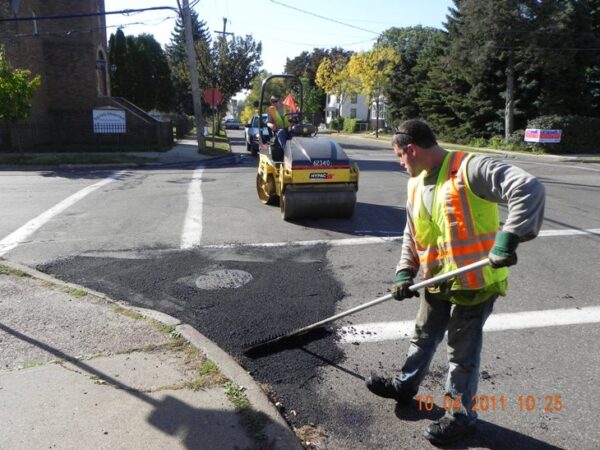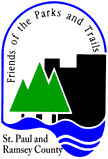Note: Following is a writeup on a panel discussion held September 18 to discuss the merits and drawbacks of the City of Saint Paul’s proposed 1% sales tax; the issue will be on the ballot in November. Friends of the Parks and Trails has come out in favor of the proposal and urges its members to take part in upcoming information sessions (click here to see a list of opportunities).
St. Paul Mayor Melvin Carter says the city’s streets “are in dire need of improvement,” and its parks system needs money to continue promoting equity-focused initiatives like the children’s recreation programs that no longer charge fees.
Amanda Duerr, vice president of government affairs for the St. Paul Area Chamber of Commerce, countered that a proposed 1 percent sales tax to benefit the city’s roads and parks would give St. Paul “the highest sales tax rate in the state,” and that could be bad for business.
Without the tax, which will be on the ballot for St. Paul residents November 7, some parks facilities likely would have to close, said Parks and Recreation Director Andy Rodriguez.
But the tax would disadvantage poor people, said Martha Njolomole, an economist with the Center of the American Experiment, a conservative think tank. Because any sales tax is flat — meaning it is based on item cost rather than income — wealthier individuals would pay a smaller percentage of their net worth. Some call that a “regressive” tax.
These were the arguments laid out in a six-person panel, held via Zoom on Monday, September 18, to argue the merits of what city officials are calling a “generational investment” for streets and parks. The event was sponsored by Union Park District Council and the League of Women Voters of St. Paul.
Friends of the Parks and Trails, along with the Saint Paul Parks Conservancy, Como Friends and others, was an early supporter of the 1% sales tax initiative.
The tax would be implemented in April 2024 if voters approve the measure. The city estimates that the sales tax would generate $984 million in revenue over the next two decades, or some $49 million per year.


Learn more!
A recording of the full 90-minute panel is available on the Friends of the Parks and Trails Facebook page. Meanwhile, we’ve assembled some of the more thought-provoking comments from panelists at the September 18 event:
- Bill Lindeke, Ph.D., urban studies instructor, University of Minnesota; MinnPost columnist: “Income taxes are progressive; property taxes in Minnesota are pretty even; sales taxes are regressive. The lowest quintile will pay 6.5% of their income with this tax, but it also will tax people from wealthier communities who come to St. Paul. Do we embrace a tool that’s the ‘least worst’ option so we can reduce the burden on St. Paul taxpayers in particular?”
- Sean Kershaw, director, Public Works: “Pedestrian deaths on major streets are at their highest level in 40 years. When we redo those streets, we will make them safer for pedestrians and for climate change,” including with new storm sewers.
- Amanda Duerr, St. Paul Area Chamber of Commerce: “This is not an end-all, be-all to St. Paul’s street-funding woes. The end-all solution is increasing the tax base.”
- Andy Rodriguez, Parks and Recreation: “Minneapolis has an elected park board and their own taxing authority. St. Paul does not. My department is part of the mayor’s office and competes with other priorities.”
- Mayor Melvin Carter: “St. Paul has had 12 years of mayors who said they wouldn’t raise taxes; but inflation has raised prices. Plus, we’re a city of neighborhoods and we have a lot of connector streets.”
- Martha Njolomole, Center of the American Experiment: “We have sales-tax exemptions on clothes and groceries. But we still have to think about low-income residents. Minnesota is one of the most highly taxed states in the country.”
The city has upcoming engagement sessions listed on its Sales Tax website, which also includes background information, ballot language and what a “yes” or “no” vote means.
